How to aerate a lawn and when to do it
Here’s how to aerate a lawn for a healthy yard
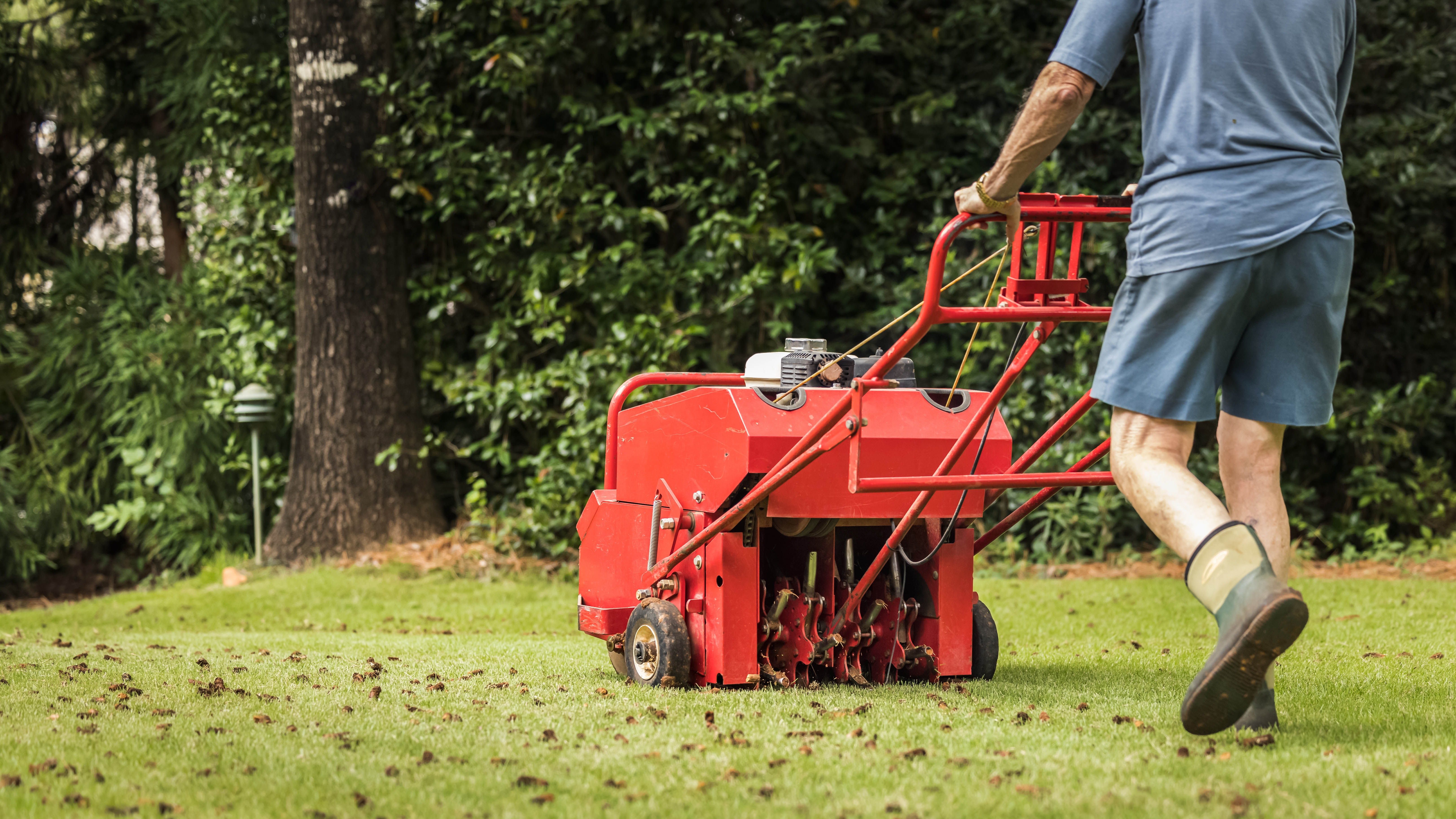
Knowing how to aerate a lawn can give your yard a new lease on life. As the name suggests, aerating involves piercing or dislodging the soil to some extent, to reduce compaction and increase air circulation. It can be a labor intensive and somewhat messy chore, but there are equally great rewards to be had, much like overseeding your lawn in the fall.
As well as increasing the air circulation, by loosening the soil, you’re helping it to absorb and drain water more effectively. That’s why it’s one of the ways to fix a waterlogged lawn and one of the 7 expert tips to make your lawn look amazing this summer. This also gives your grass roots more space to grow and allows better access to much-needed nutrients. Ultimately, aerating has huge benefits, and the task should not be skipped by lawn-lovers. But, there is a time and a place for aeration, so you shouldn’t overdo it either. If you’re keen to learn how to aerate a lawn and when to do it, we’ve covered what to do step-by-step here.
Is your lawn looking worse for wear? Here's 9 tips to revive dead grass and make your lawn green again.
How to aerate a lawn in 7 simple steps
- Lawn aerator (spike or core)
- Flag markers or alternative
- Grass seed
- Fertilizer
1. Choose your aerator — First, you need to decide what you want to use to aerate your lawn. Two types of aerator exist: spike and core aerators. Spike aerators literally feature long spikes that puncture the ground as you pass over it. Core aerators, on the other hand, pull up ‘cores’ of soil as they work, leaving them on the surface.
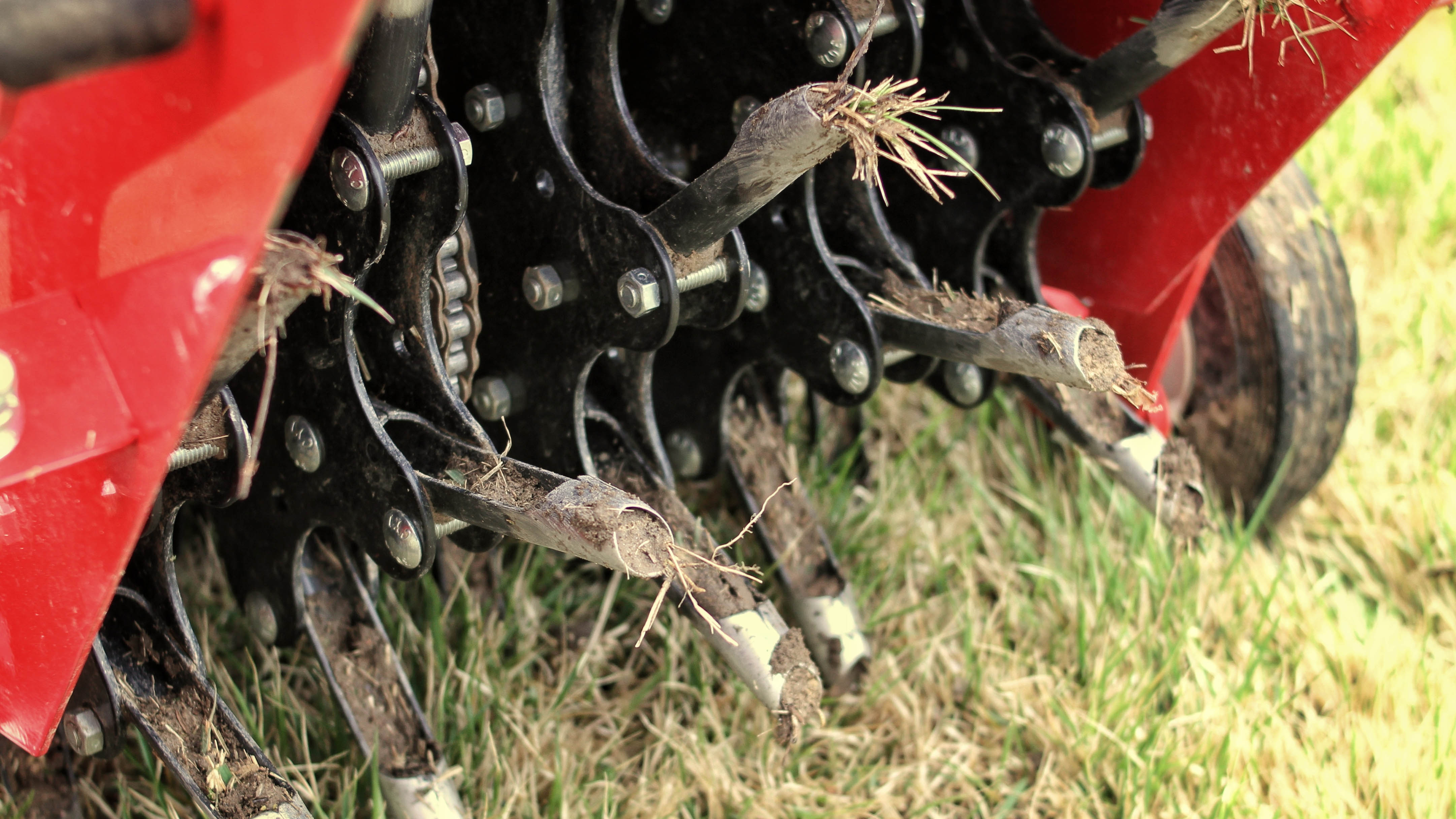
You can find manual tools for each method so you can aerate by hand, and attachments exist which you can hitch and tow from behind a riding lawn mower. Alternatively, you can rent or buy electric dethatcher and aerators from most home department stores, such as the Ryobi ONE+ HP 18V Brushless 14" Cordless Battery Dethatcher/Aerator ($459, The Home Depot).
Between the two methods, core aeration is generally more effective because it leaves a much larger gap for the air to penetrate, but bear in mind it is more messy as ‘cores’ will be scattered across your yard by the time you’re done.
2. Water your lawn — Make sure you water your lawn the day before you plan to aerate it. This will make the task much easier as the soil will break apart more freely. You can always schedule the work in accordance with the next downpour if you want to save water. You want about an inch of water across your lawn.
Sign up to get the BEST of Tom's Guide direct to your inbox.
Get instant access to breaking news, the hottest reviews, great deals and helpful tips.
3. Mark any necessary areas you want to avoid — Once you start aerating your lawn, you’d be surprised how determined you can get. So much so that it's all too easy to run over an unsuspecting irrigation head.
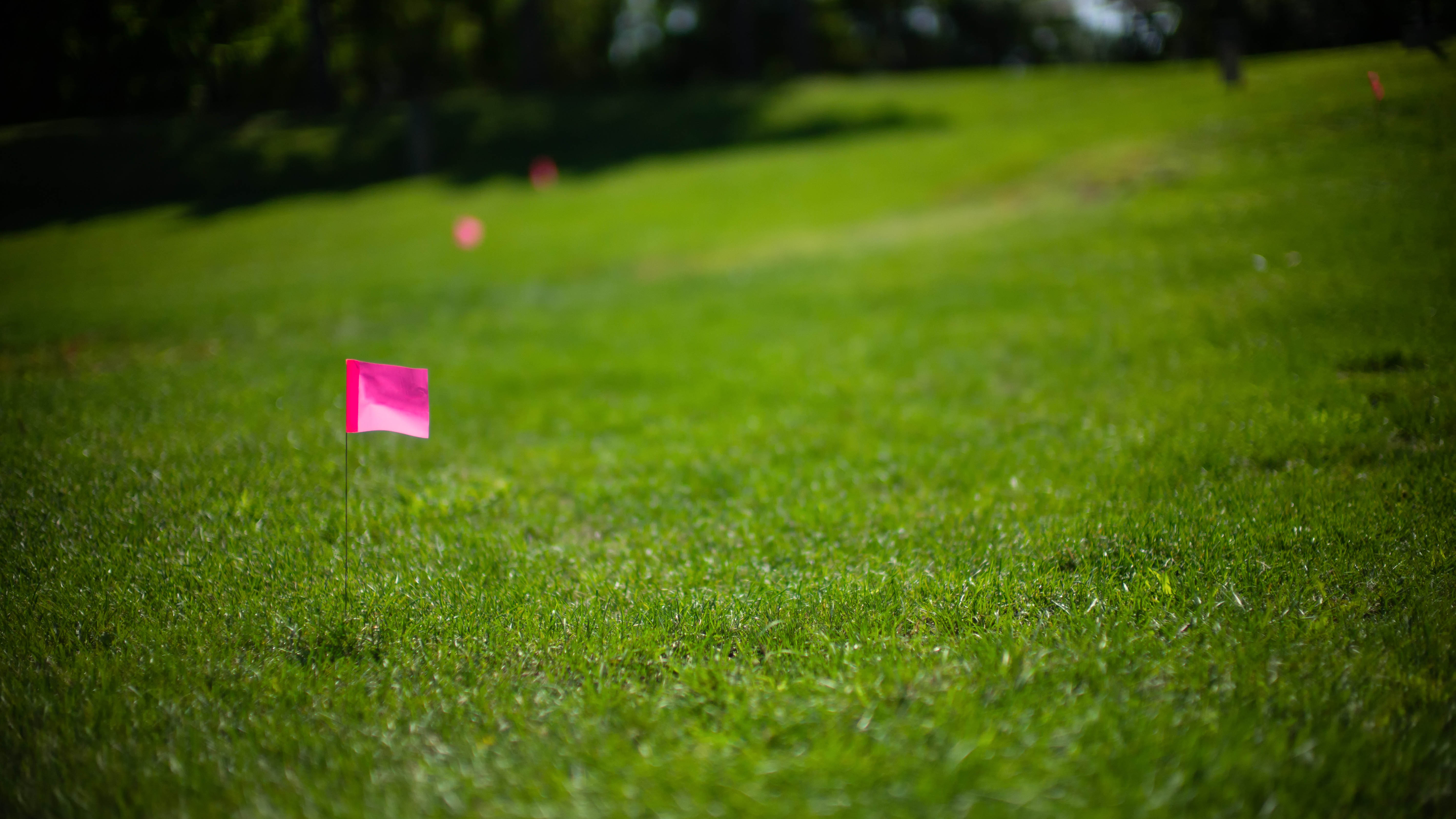
Mark any areas you need to avoid when aerating, such as irrigation systems or tree roots. You can really use whatever you want to do this, but make sure whatever you use is noticeable and won’t get knocked out of place. We recommend the ACE Supply Orange Marking Flags ($13, Amazon). Remember to keep your markings for use next year as well.
4. Make sure the ground is soft — When the day arrives to aerate your yard, make sure the ground is soft enough to work. If you’re unsure, test your aerator in a discreet spot. If it’s too firm, it might require more water and a few more days.
On the other hand, the ground can also be too wet. If the soil is bordering on muddy, don’t bother aerating it. Wait a couple of days for it to firm up. Then try again.
5. Aerate the lawn — Now comes the main event. To aerate a lawn, you essentially want to work your way up and down in one direction to cover the whole space, and then back and forth across yourself from a perpendicular angle. This means you will work over the same soil twice.
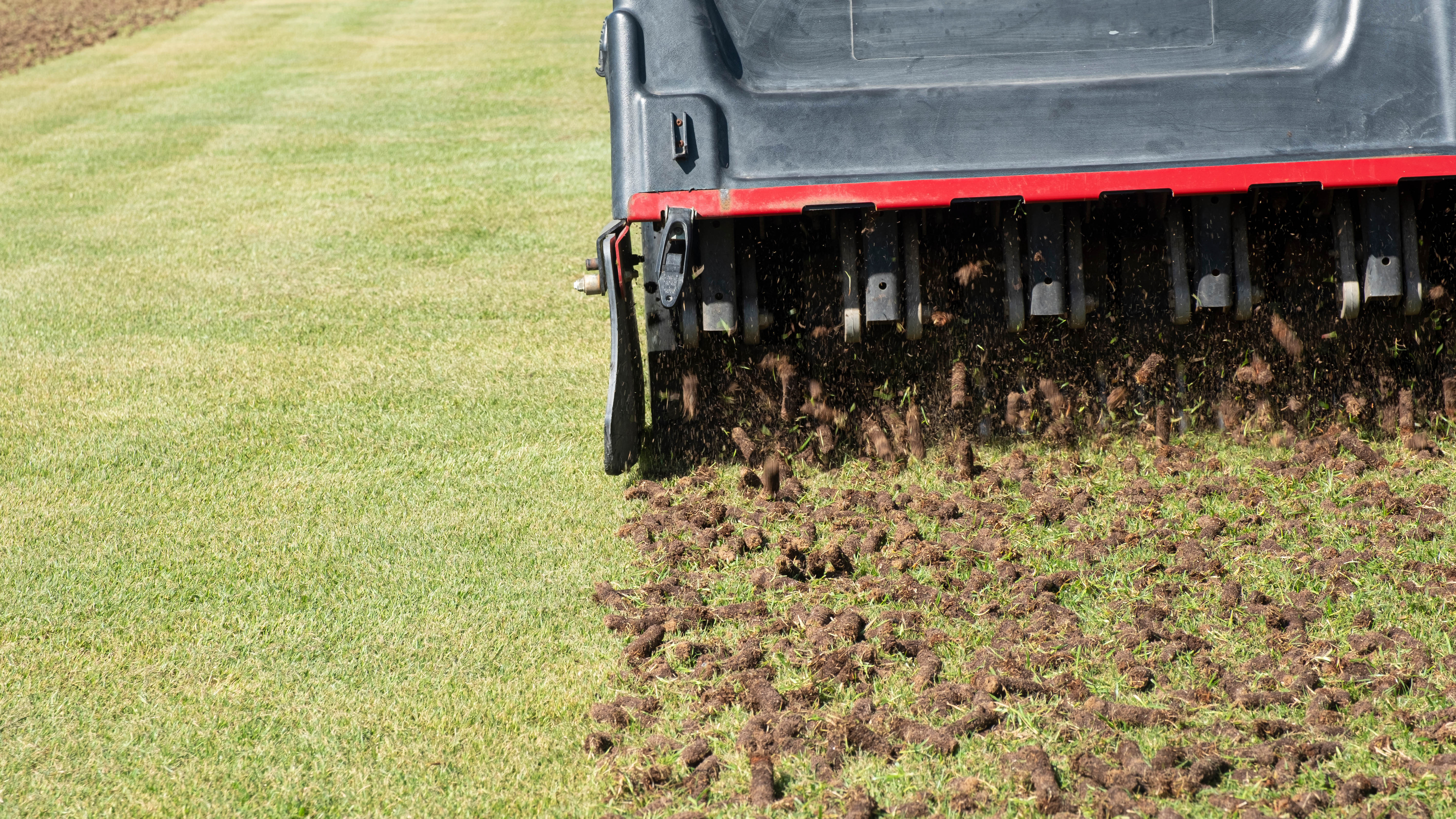
If you’re aerating an area which suffers from particularly high traffic, such as near a pathway or across from the driveway, pass over that section with the aerator a few more times to be thorough. This is necessary because that section of soil is likely more compacted than anywhere else.
6. Wait and see — If you used a core aerator, it may look like a bit of a mess once you’re finished, but all of that soil on top is actually a good thing. If you leave it on its own to dry and break down naturally, it will better spread the nutrients across your yard.
It should only take a few days to a week for these cores to fully decompose. Don’t be tempted to rake them away in the meantime — you will only be removing the precious nutrients your soil is imparting on your lawn.
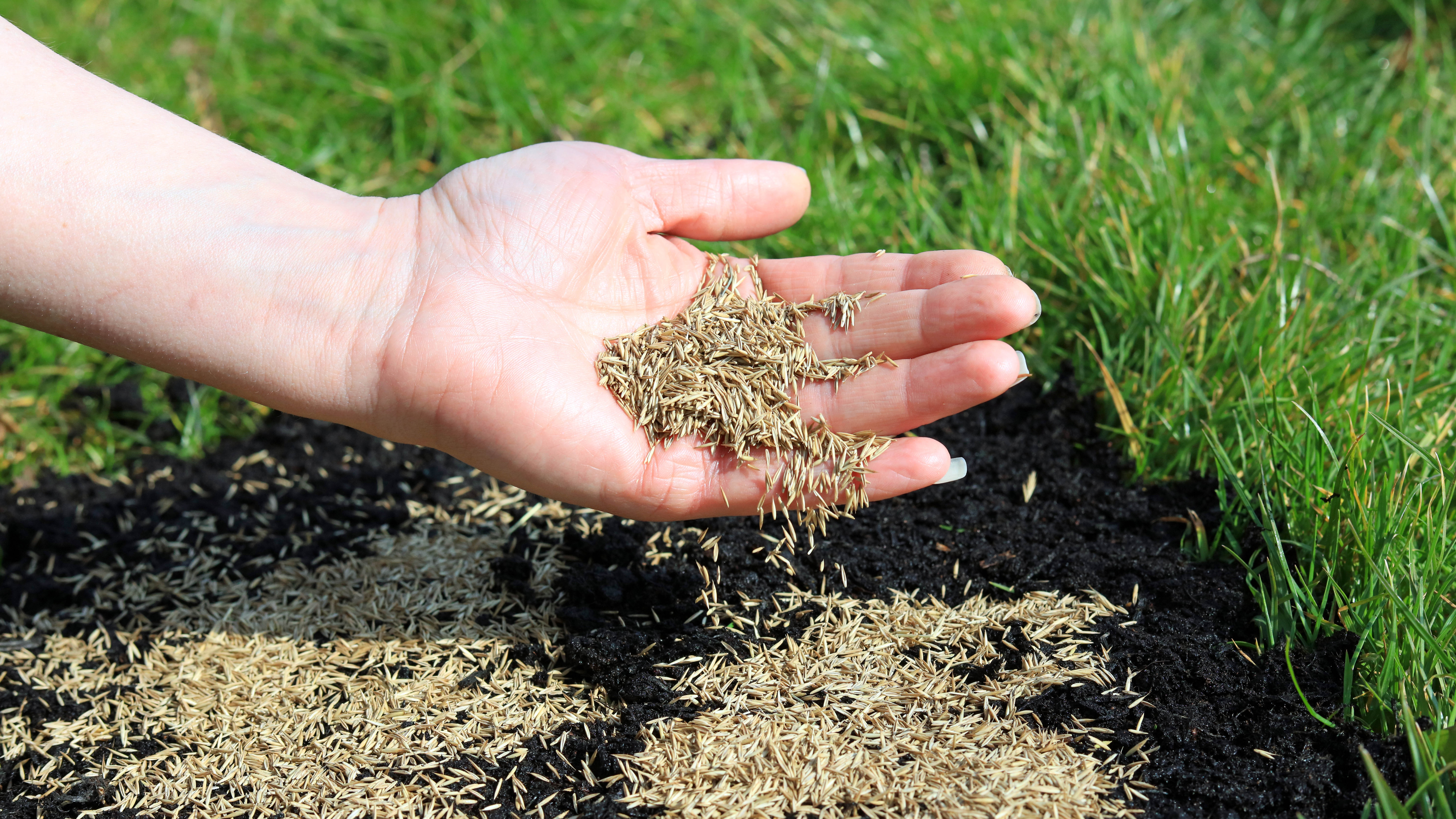
7. Apply what’s needed — Now that your lawn is fully aerated, it’s time to overseed and apply fertilizer to encourage growth.
Remember to water well and keep an eye on it. A freshly aerated lawn will dry out much more quickly compared to a compacted one, so you will likely need to water it more frequently at first.
When should you aerate the lawn?
The best time to aerate your lawn largely depends on the grass type. For cool-season grasses, most tend to aerate their lawn in early fall, mainly due to the heavy traffic the ground has suffered over the summer months. This gives the grass time to recover before winter hits as well. But, there's no rule against aerating this type in the early springtime either. Warm-season grasses, on the other hand, are best aerated from spring to early summer.
In either case, just make sure you do not do it in full summer when the weather is hot and dry — this could dry out your lawn and do more harm than good.
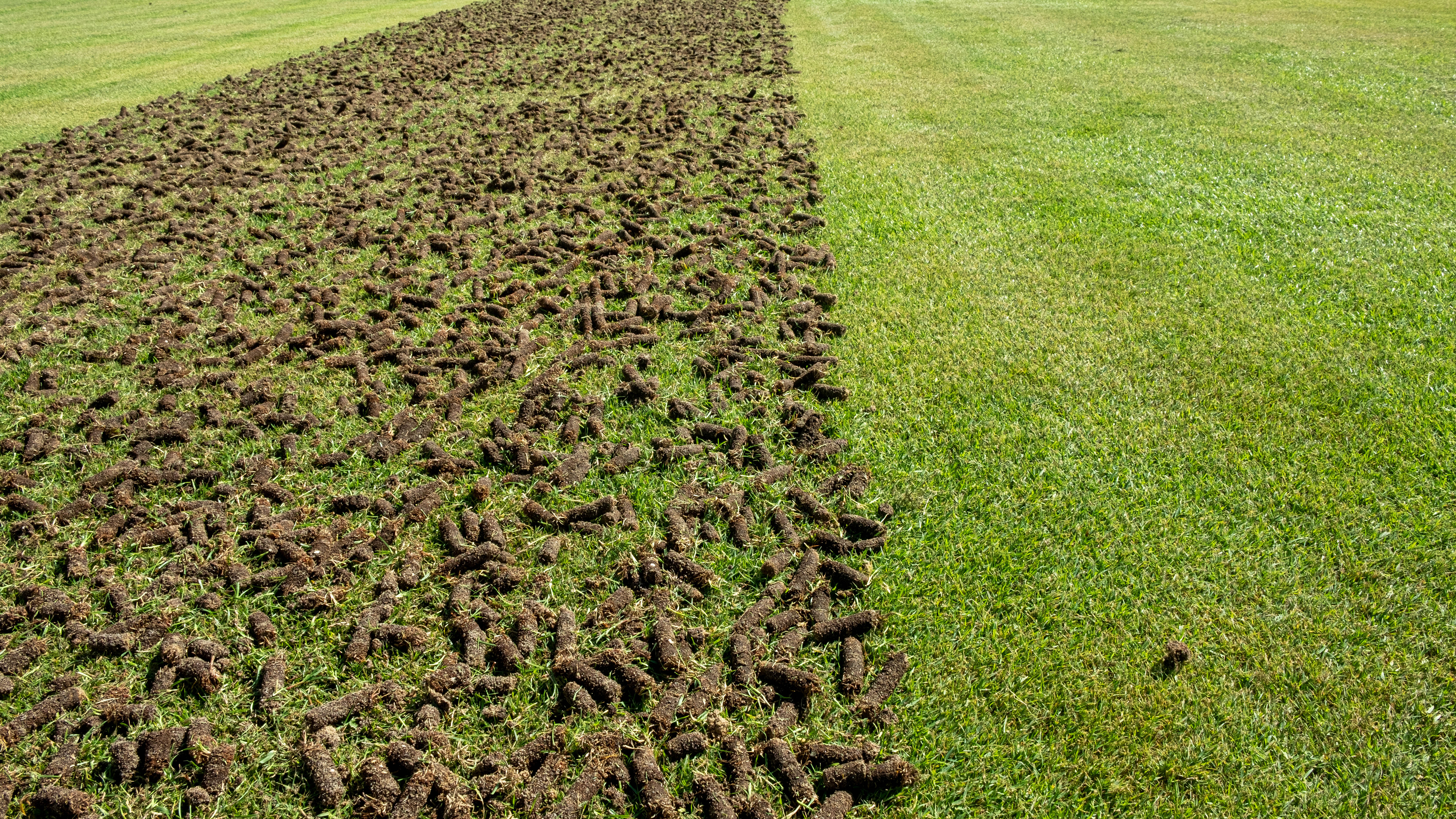
How often should you aerate the lawn?
This depends on the type of soil you have, as well as the amount of traffic it gets. Soil which suffers a lot of footfall should be aerated every year, while sandy soil will only need it every 2-3 years.
How do I know if my lawn needs aeration?
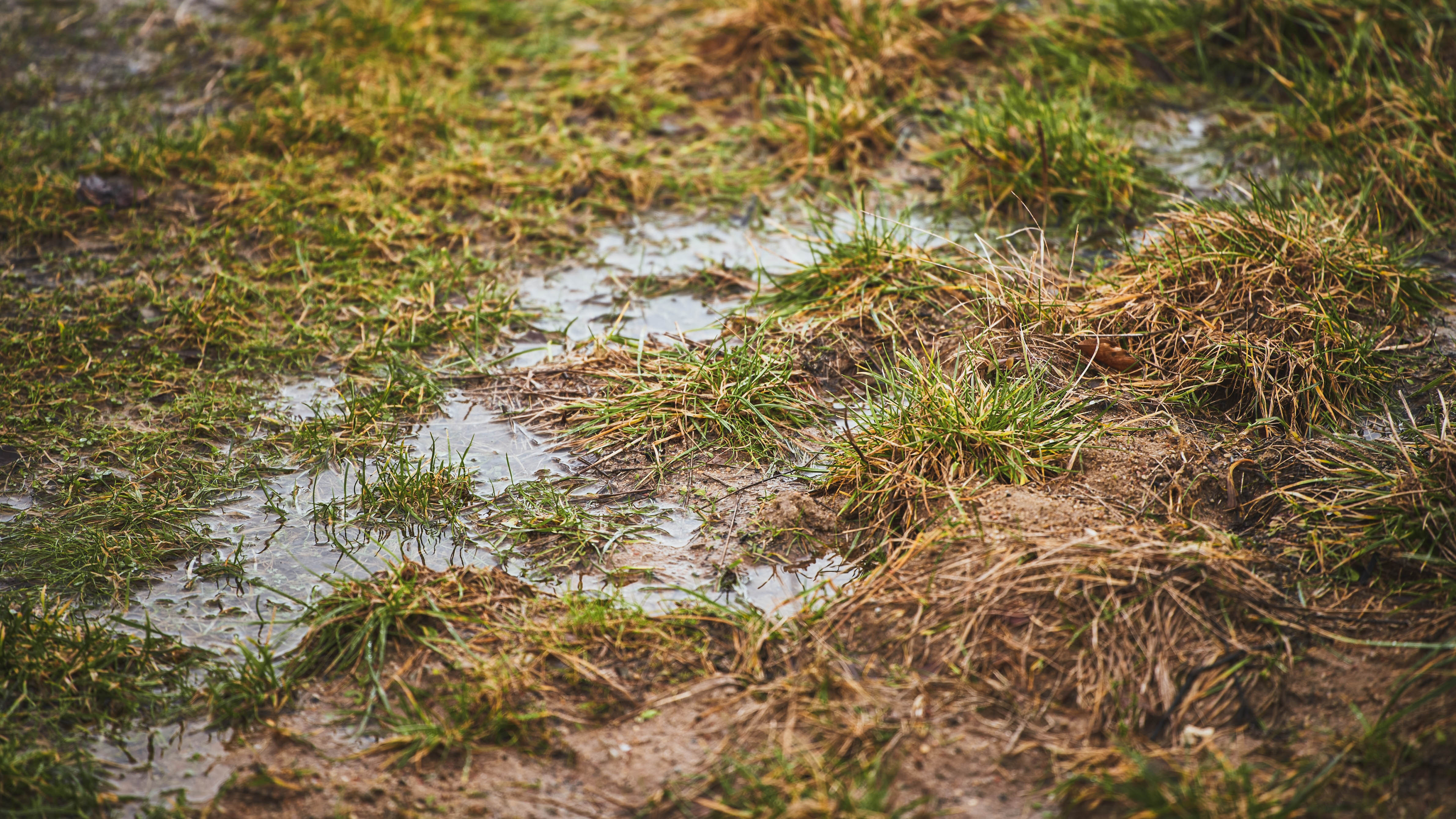
Your soil will naturally be compacted over time, whether from everyday footfall or from the machinery you use. As weight presses down on the surface, the particles are more tightly packed with less room for oxygen. So you’re ultimately left with soil which feels hard and solid in nature — heavy-clay soils and loam are particularly prone to compaction.
As well as the consistency of the soil itself, it will have an impact on your yard which you can look out for. Overly compacted soil will deter your grass health; this is only natural when you consider that the roots won’t have easy access to the necessary air, water or nutrients. When it comes to watering your yard, you might also notice the water runs off more than it should. Overly compacted soil will struggle to absorb water as effectively. It will also retain it for longer than it should as well, which can lead to root rot. Signs that you should aerate the lawn also include discolouration and uneven growth of grass as well as a thick layer of thatch on the surface which blocks nutrients from reaching the roots.
For more details, check out 7 signs your lawn needs aerating.
Is too much aeration bad for the lawn?
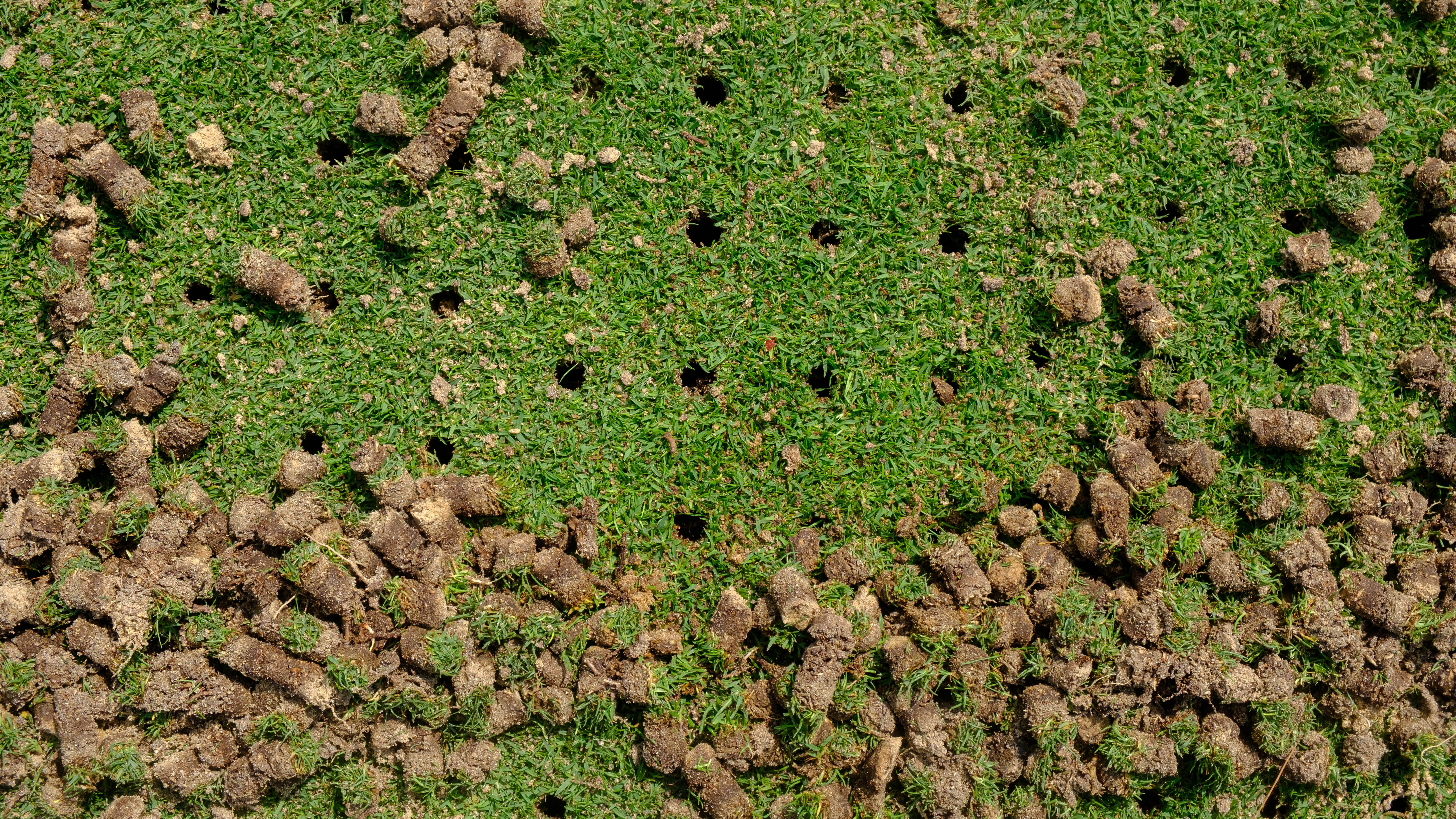
When it comes to aerating, unfortunately you can have too much of a good thing. Over-aerating your lawn can cause unnecessary stress for your grass, even killing it in extreme circumstances. By opening up the soil, as well as weakening the grass, you’re leaving it more vulnerable to weed and insect infestations. It can also dry out all the more easily in such conditions, or even overexpose the roots to moisture if it sits at this level.
Because of this, you need to ensure you aerate only when needed and at the right time of year, otherwise you could be doing more harm than good. Make sure you’re using the right tools and method for the job as well — you can always call in a professional if you’re unsure or need help.
More from Tom's Guide

Katie Mortram used to be a Homes Editor for Tom's Guide, where she oversaw everything from kitchen appliances to gardening tools, as well as smart home tech. Specializing in providing expert advice for cleaning and home manintenance, she now works as Household Advice Editor for Good Housekeeping.
